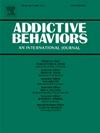基于偏见的欺凌在青少年经常使用大麻中的作用
IF 3.6
2区 医学
Q1 PSYCHOLOGY, CLINICAL
引用次数: 0
摘要
研究表明,基于偏见的欺凌和骚扰会损害具有少数群体身份的青年的健康,大量/经常使用大麻会影响青少年的大脑发育。我们研究了基于性取向、性别认同和表达(SOGIE)、种族和民族以及社会地位的欺凌经历如何影响大麻的常规使用。数据来自完成2022年明尼苏达州学生调查的8年级、9年级和11年级学生(N = 82,933)。学生报告了过去30天内使用大麻的情况(3-5次或更多,而不是更少/没有),社会地位(即性,性别,种族和民族身份,年级,资源获取),以及过去30天内基于种族和sogi的欺凌行为(任何对没有)。详尽卡方自动交互检测确定了五种社会地位和基于偏见的欺凌的组合,这些组合与每个年级经常使用大麻的最高患病率有关。结果表明,在不同年级,与处于相同社会地位但成为偏见目标的青少年相比,处于不受偏见欺凌的社会地位的青少年中,大麻使用率最高的青少年的大麻使用率要低50 - 68%。例如,有18%的八年级学生资源匮乏;被认定为美洲印第安人、阿拉斯加原住民或多种族;经历过基于偏见的欺凌的青少年经常使用大麻,而没有报告基于偏见的欺凌的具有相同身份的青少年的患病率为6.8%。未来有必要研究基于偏见的欺凌作为青少年大麻使用的潜在机制,特别是在具有多种少数群体身份的青少年中。本文章由计算机程序翻译,如有差异,请以英文原文为准。
The role of bias-based bullying in regular cannabis use among adolescents
Studies show bias-based bullying and harassment compromise health for youth with minoritized identities, and heavy/regular use of cannabis has implications for adolescent brain development. We examined how regular cannabis use varied by experiences of bullying based on sexual orientation, gender identity, and expression (SOGIE) or race and ethnicity, and social positions. Data came from 8th, 9th, and 11th graders completing the 2022 Minnesota Student Survey (N = 82,933). Students reported past 30 day cannabis use (3–5 times or more versus fewer/none), social positions (i.e., sexual, gender, racial, and ethnic identities, grade, access to resources), and race- and SOGIE-based bullying in the past 30 days (any versus none). Exhaustive Chi-square automatic interaction detection identified combinations of five social positions and bias-based bullying associated with the highest prevalences of regular cannabis use for each grade. Results indicated that across grades, cannabis use was 50–68 % lower among youth in social positions with the highest prevalence of frequent cannabis use when they were not the targets of bias-based bullying compared to youth with the same social positions who were targets of bias. For example, 18 % of 8th graders who had low access to resources; identified as American Indian, Alaska Native, or multiracial; and who experienced SOGIE-based bullying engaged in regular cannabis use, compared to 6.8 % prevalence for youth with the same identities who did not report bias-based bullying. Future research that examines bias-based bullying as a potential mechanism in adolescent cannabis use is warranted, particularly among youth with multiple minoritized identities.
求助全文
通过发布文献求助,成功后即可免费获取论文全文。
去求助
来源期刊

Addictive behaviors
医学-药物滥用
CiteScore
8.40
自引率
4.50%
发文量
283
审稿时长
46 days
期刊介绍:
Addictive Behaviors is an international peer-reviewed journal publishing high quality human research on addictive behaviors and disorders since 1975. The journal accepts submissions of full-length papers and short communications on substance-related addictions such as the abuse of alcohol, drugs and nicotine, and behavioral addictions involving gambling and technology. We primarily publish behavioral and psychosocial research but our articles span the fields of psychology, sociology, psychiatry, epidemiology, social policy, medicine, pharmacology and neuroscience. While theoretical orientations are diverse, the emphasis of the journal is primarily empirical. That is, sound experimental design combined with valid, reliable assessment and evaluation procedures are a requisite for acceptance. However, innovative and empirically oriented case studies that might encourage new lines of inquiry are accepted as well. Studies that clearly contribute to current knowledge of etiology, prevention, social policy or treatment are given priority. Scholarly commentaries on topical issues, systematic reviews, and mini reviews are encouraged. We especially welcome multimedia papers that incorporate video or audio components to better display methodology or findings.
Studies can also be submitted to Addictive Behaviors? companion title, the open access journal Addictive Behaviors Reports, which has a particular interest in ''non-traditional'', innovative and empirically-oriented research such as negative/null data papers, replication studies, case reports on novel treatments, and cross-cultural research.
 求助内容:
求助内容: 应助结果提醒方式:
应助结果提醒方式:


